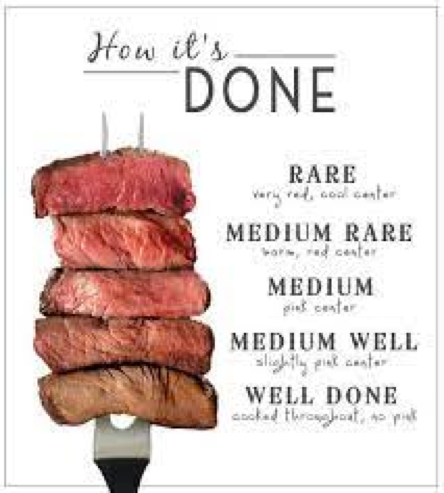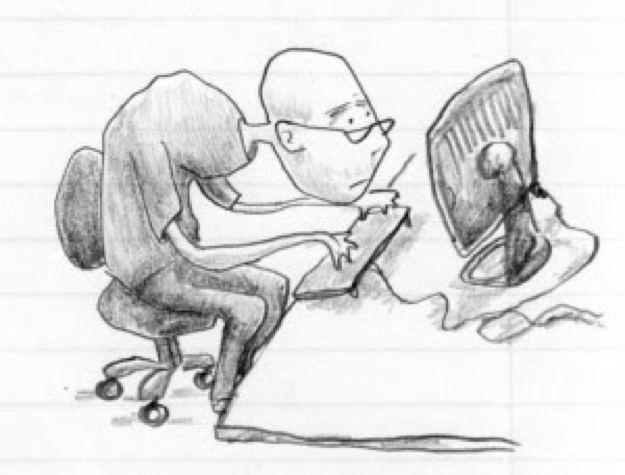Blog
28 Nov 2021
Why Stretching Isn’t Always the Answer
By Erin Lanting, BSc, MScPT
A story I hear often from my clients is that they always feel tight in a certain area yet stretching doesn’t seem to help. In fact, in some cases they feel stretching has made things worse. Why is this? Wouldn’t it make sense that if a muscle feels “tight” we should stretch it? Not necessarily...lets dive in.
What exactly is muscle tightness?
What we perceive as muscle tightness is known as hypertonicity or in other words, increased muscle tone. Muscles live in various states of tone, and that tone is controlled by the nervous system. In other words, our brain tells our muscles when, how long, and how strongly they should contract. So, depending on the task at hand, our muscles will be more or less active. There should always be some tone in a muscle, even at rest, otherwise we wouldnt be able to hold our postures at all. A neat analogy to help explain this is to think of a rare, medium and well done steak. I havent figured out an appropriate vegetarian analogy yet! A rare steak is like a low tone muscle, it feels “squishy” and you might struggle to engage or activate that muscle group. A medium steak is similar to normal muscle tone at rest, it has a bit of give to it when pressed but there is some underlying firmness to it. Lastly, a well done steak is like a hypertonic muscle, it has minimal give and feels more firm to touch compared to other muscles or the same muscle on the other side of the body. This type of muscle is often what you will say feels “tight” and or painful, and you will be inclined to want to stretch it out. But hold on….
Muscles live in various states of tone, and that tone is controlled by the nervous system. In other words, our brain tells our muscles when, how long, and how strongly they should contract. So, depending on the task at hand, our muscles will be more or less active. There should always be some tone in a muscle, even at rest, otherwise we wouldnt be able to hold our postures at all. A neat analogy to help explain this is to think of a rare, medium and well done steak. I havent figured out an appropriate vegetarian analogy yet! A rare steak is like a low tone muscle, it feels “squishy” and you might struggle to engage or activate that muscle group. A medium steak is similar to normal muscle tone at rest, it has a bit of give to it when pressed but there is some underlying firmness to it. Lastly, a well done steak is like a hypertonic muscle, it has minimal give and feels more firm to touch compared to other muscles or the same muscle on the other side of the body. This type of muscle is often what you will say feels “tight” and or painful, and you will be inclined to want to stretch it out. But hold on….
What can cause or contribute to hypertonic muscles?
Lets say we did a leg workout one day and then the next day we wake up feeling tight and mildly sore in our legs. In this case, it would make sense that stretching should help and feel good. However, if we have an area that always feels tight despite whether we are working out or not, or maybe an area that suddenly feels tight for no rhyme or reason, its not usually as simple as doing stretches. This could be when we have underlying instability in a joint, weakness in our core, or a chronic postural dysfunction, for example. Our nervous systems are pretty clever in that they will try to protect us by ramping up the signals to the muscles in that area of dysfunction. So it could be that the “tight” muscle is actually weak and our nervous system is simply trying to compensate for the weakness. Or it could be that we are weak in another area or muscle so again the body is trying to compensate but this time by tightening a different muscle group. Another scenario is that there is some sort of spinal dysfunction creating tension in the nerve running through the same area as the muscle so the muscle again feels tight but its actually the nerve. Nerves definitely don’t like to be stretched so this might be when the stretching can make it feel worse. I have seen this a handful of times with clients who complain of hamstring tightness thats actually sciatic nerve tension coming from their lower back.
feels tight for no rhyme or reason, its not usually as simple as doing stretches. This could be when we have underlying instability in a joint, weakness in our core, or a chronic postural dysfunction, for example. Our nervous systems are pretty clever in that they will try to protect us by ramping up the signals to the muscles in that area of dysfunction. So it could be that the “tight” muscle is actually weak and our nervous system is simply trying to compensate for the weakness. Or it could be that we are weak in another area or muscle so again the body is trying to compensate but this time by tightening a different muscle group. Another scenario is that there is some sort of spinal dysfunction creating tension in the nerve running through the same area as the muscle so the muscle again feels tight but its actually the nerve. Nerves definitely don’t like to be stretched so this might be when the stretching can make it feel worse. I have seen this a handful of times with clients who complain of hamstring tightness thats actually sciatic nerve tension coming from their lower back.
So, when to stretch?
First things first, stretching should feel GOOD during and after the stretch is completed. I never recommend stretching when its outright painful so make sure you listen to your body and ask yourself if you are getting the desired results from the stretch. In normal healthy tissue, we should feel a sense of relaxation and improved mobility with stretching. So, stretch when it feels good but if the tightness is lingering and not making sense, or the stretch simply hurts, ask yourself this: What else can you try when stretching isnt working? ACTIVATE the muscle using a strengthening exercise for that muscle group. Keep it simple and ideally isolated to the one muscle group to start. MOVE! Take that muscle through slow pain-free range of motion but dont hold in the stretched position. This is essentially active stretching rather than passive. STRENGTHEN other muscles like your core or opposite muscle groups to the tight muscle. ROLL the muscle using a tennis ball or foam roller. And finally, CONNECT
getting the desired results from the stretch. In normal healthy tissue, we should feel a sense of relaxation and improved mobility with stretching. So, stretch when it feels good but if the tightness is lingering and not making sense, or the stretch simply hurts, ask yourself this: What else can you try when stretching isnt working? ACTIVATE the muscle using a strengthening exercise for that muscle group. Keep it simple and ideally isolated to the one muscle group to start. MOVE! Take that muscle through slow pain-free range of motion but dont hold in the stretched position. This is essentially active stretching rather than passive. STRENGTHEN other muscles like your core or opposite muscle groups to the tight muscle. ROLL the muscle using a tennis ball or foam roller. And finally, CONNECT with a physiotherapist who can help guide you!
with a physiotherapist who can help guide you!
